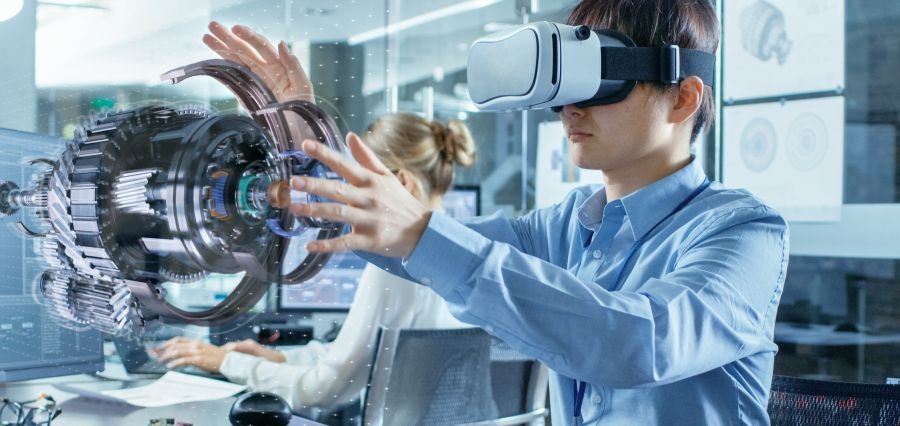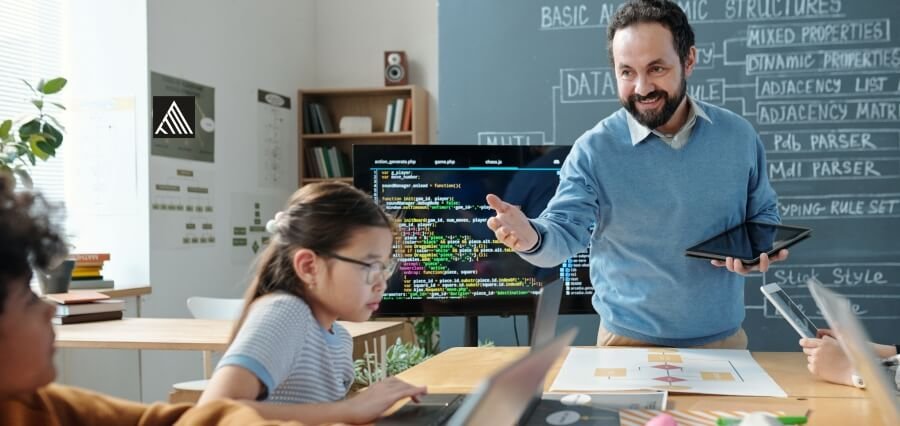Virtual reality was the stuff of future novelty. It has become a revolutionizing tool for education, healthcare and many more.
The field develops possible environments which are immersed and interactive in nature. Long-standing problems get filled with this field and create new opportunities as well. It revolutionized and considerably transformed education, healthcare, and many more ways.
Education has been characterized by unequal resource access, lack of hands-on experiences, and disengagement. All these challenges have been dealt with by VR through dynamic learning environments that cut across physical and geographical borders.
VR allows one to interactively explore complex subjects in the classroom. For instance, in sciences, students can travel through the human body or to distant galaxies to better understand abstract concepts. Language students can practice speaking in simulated real-world environments, which improves retention and fluency. VR also caters to students with special needs by creating tailored learning experiences, making education more inclusive.
Students can practice surgeries free of risk while in medical schools, and students in engineering will be able to examine intricate machinery in virtual labs.
Improving Healthcare
Healthcare provides a gap filling in training, treatment, and patient care. The specialists can exercise their complex procedures and emergency scenario performances using the VR simulations given. The more immersive experiences reduce the requirements for physical resources without thorough preparation significantly.
VR has innovative therapeutic application for patients. Such VR-based therapies can help treat phobias, PTSD, and anxiety disorders in mental health. It can expose the patient to his fears and enable him to overcome them under professional guidance in controlled virtual settings. The management of pain is also revolutionized with the use of VR, distracting patients during procedure or episode of chronic pain and thus reducing dependence on medication.
In rehabilitation, VR creates engaging and motivating environments for stroke or injury patients. It gamifies exercises, which maintain the commitment of patients towards recovery journeys while real-time tracking is done on the progress.
Other than education and healthcare, VR supports business collaboration in every sector. The technology is applied in business to carry out remote meetings and trainings. Business therefore removes geographical boundaries to connect the world with its products and services. In the shared virtual space, workers within a firm collaborate to achieve more engagement and productivity.
In architecture and real estate, stakeholders can use VR to explore 3D models and properties before they are constructed. This means there is more streamlined decision-making and fewer errors with enhanced client satisfaction. For instance, in retail, virtual showrooms have enabled customers to touch and feel the products from the comfort of their homes.
The untimely experiences of VR have opened up doors to entertainment and tourism. In the meantime, tourists are gazing at places virtually, while cinema VR experiences immerse the audience into the boundary-breaking realms of creativity.
Challenges and Opportunities
Despite all the hype, the technology of VR is still high cost, ridden with technological inadequacies, and requires particular equipment. And to forget is also access, especially for low-income people in resource-deficient regions. Continued use of VR also has health effects such as motion sickness and eye strain.
However, most of these barriers are approached through upgrades in hardware, software, and connectivity. Currently, more portable and relatively cheaper devices present higher accessibility for more people in VR. Enhancements, including 5G and cloud computing, improve the experience of virtual reality. This increases through every upgrade, and interaction increases with reduction in latency.
Future of VR
The more technology advances, the more enormous the potential of VR will be. The promise of AI is that it’s going to integrate with VR more personally and more adaptively. In education, AI-driven environments might adjust the content to individual learning styles. Virtual assistants in healthcare could add to therapy and training sessions.
Besides, VR will turn to become a kind of nucleus in the construction of the metaverse: a shared virtual space in which the physical and digital realities will unite. New chances for cooperation, entertainment, and innovation in the industry will open.
Virtual reality is no longer a product of entertainment. It has turned to become a tool to break the gap within education, healthcare, and other areas. It is changing the way people learn, heal, and connect with immersive and accessible and influential experiences. However, there are challenges that remain; progress promises that it will have the potential in realizing change, making ways for the progress of sectors’ and their integration. It has just begun on its journey and endless possibilities lie before it.







